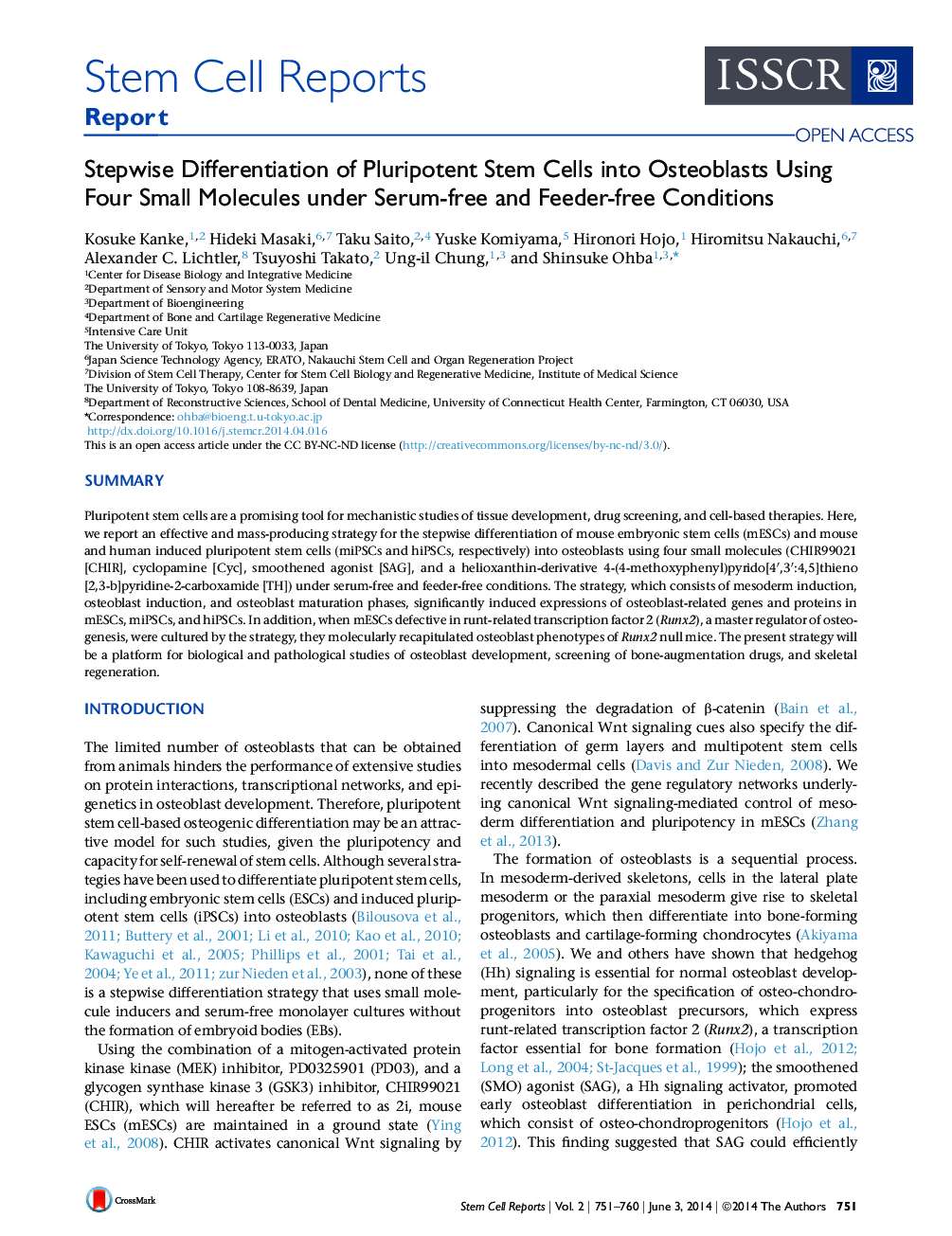| Article ID | Journal | Published Year | Pages | File Type |
|---|---|---|---|---|
| 2093726 | Stem Cell Reports | 2014 | 10 Pages |
•Osteoblasts were differentiated from pluripotent stem cells under defined conditions•The strategy utilizes four small molecule inducers with no serum or feeder cells•The strategy comprises mesoderm induction and subsequent osteoblast induction•The strategy can at least partially recapitulate physiological osteoblast development
SummaryPluripotent stem cells are a promising tool for mechanistic studies of tissue development, drug screening, and cell-based therapies. Here, we report an effective and mass-producing strategy for the stepwise differentiation of mouse embryonic stem cells (mESCs) and mouse and human induced pluripotent stem cells (miPSCs and hiPSCs, respectively) into osteoblasts using four small molecules (CHIR99021 [CHIR], cyclopamine [Cyc], smoothened agonist [SAG], and a helioxanthin-derivative 4-(4-methoxyphenyl)pyrido[4′,3′:4,5]thieno[2,3-b]pyridine-2-carboxamide [TH]) under serum-free and feeder-free conditions. The strategy, which consists of mesoderm induction, osteoblast induction, and osteoblast maturation phases, significantly induced expressions of osteoblast-related genes and proteins in mESCs, miPSCs, and hiPSCs. In addition, when mESCs defective in runt-related transcription factor 2 (Runx2), a master regulator of osteogenesis, were cultured by the strategy, they molecularly recapitulated osteoblast phenotypes of Runx2 null mice. The present strategy will be a platform for biological and pathological studies of osteoblast development, screening of bone-augmentation drugs, and skeletal regeneration.
Graphical AbstractFigure optionsDownload full-size imageDownload as PowerPoint slide
